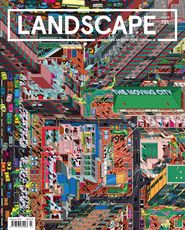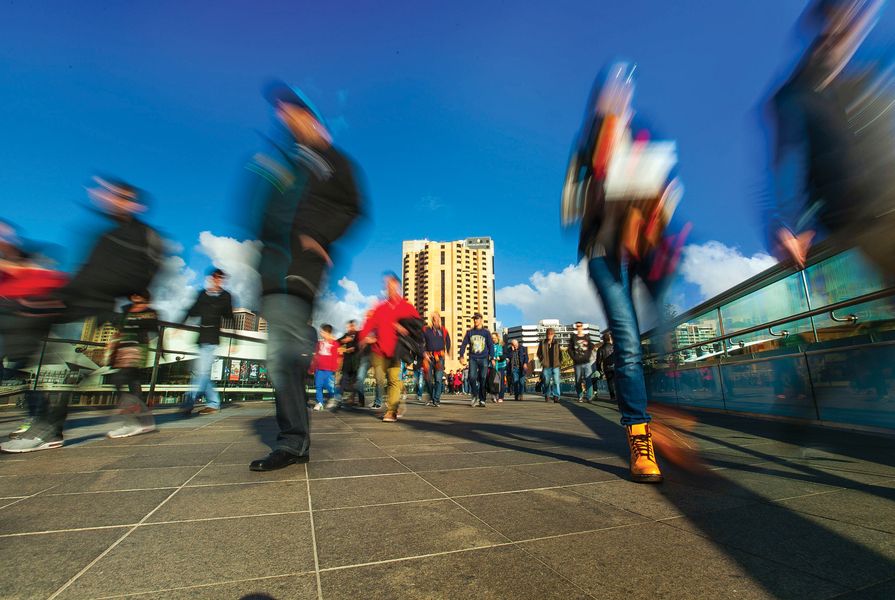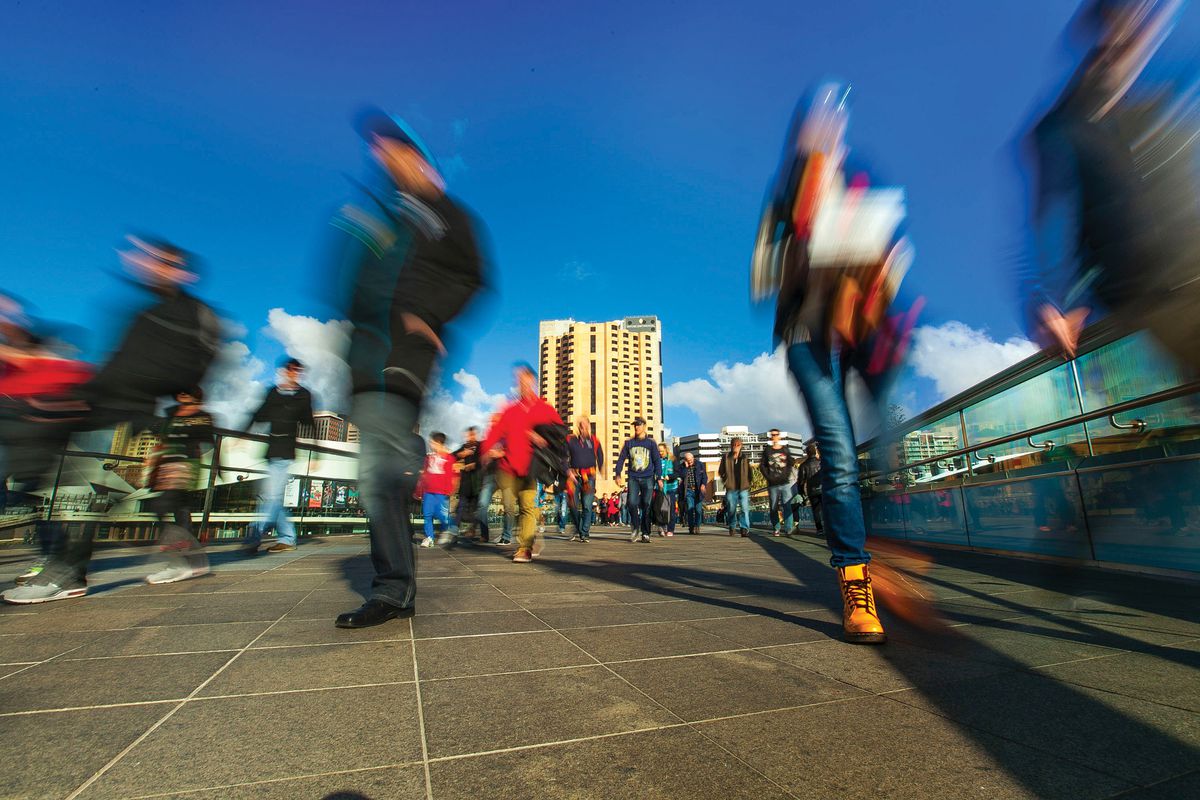The city is a palimpsest; it moves within time and as a collection of layers for those who read it as a textured landscape. I love this city, but it is not mine. I am living on stolen land. As an Indigenous academic I recognize that this city, Adelaide, is built on the traditional land of the Kaurna people. The city has been built over another people’s home but that home is still here, Kaurna people are still here and if you scrape back the myth created by the settlers, you will see this.
I have been trained by Indigenous Elders and by academia to listen to the song that the world around us sings.1 I have been trained as an Indigenous woman with a dual heritage – as an Indigenous woman from another part of Australia and as the daughter of the settler, the colonizer – to look at the signs of the first layer of this palimpsest. I look for sites of memory2 made visible by a dual naming process undertaken by the council of this city I live in.
A moving Indigenous population
There is a time in this cityscape, at the end of the working day, when people are moving to elsewhere. I love this time of day, especially in the cooler months. As an Indigenous academic working within the discipline of cultural studies I am given licence to study my fellow human as a flâneuse, the feminine version of flâneur – the individual made known by German Jewish philosopher Walter Benjamin, who would saunter around the city observing society. I walk up to the heart of the city’s retail sector fresh from teaching Indigenous knowledges to under- graduates. I pass the building that once housed the first Kaurna school. I may have some shopping to do, but first and foremost I have some observing to do. I was taught by Kaurna Elders to observe, to look not just down and at my destination but all around me at the signs of life, the signs that become something more; they become a story.
Moving through the city: people alight from a tram at one of central Adelaide’s tram stops. The stops were designed by Peter Elliott Architecture and Urban Design, Dryden Crute Design and TCL.
Image: Andy Rasheed, courtesy of TCL
On this evening I see Indigenous people; they are here in this cityscape. I watch and listen and I know from my own understandings that they are not Kaurna – they, too, are part of a moving population. Their language and appearance lead me to assume that they are probably from the north, perhaps moving to the city to support family here for medical treatment, or to seek work, or to escape conditions thrust upon them by the Australian Government’s BasicsCard for welfare recipients. But I could story further, beyond the myth created by the settler population in regards to Indigenous people, and instead believe they are in the city to participate in an art exhibition opening, or to perform in one of the theatres in this city of festivals, or to speak at an important conference. People, like the city, need to be read as palimpsests, as layers influenced by a society moving towards modernity, not just as stereotypes.
As I leave the city for my suburban home, I turn away from the direction of Victoria Square – also known as Tarntanyangga (place of the big red kangaroo in Kaurna) – and toward the train station. On the train I sometimes run into a particular Kaurna Elder who has taught me part of his language and who has moved within this city, rubbing shoulders with all of society, proving that his people are still here, his language is still here. His people have not moved geographically; instead, they have moved with time and taken their culture with them into the present to influence the powers that be.
Sites of memory and dual naming
This city I live in has moved into a more thoughtful time. It is a city that created a dual naming process to bring Kaurna words into the cityscape.3 In addition to Victoria Square being dually named Tarntanyangga, we also have Mukata (Hindmarsh Square), Wauwi (Light Square) and Karrawirra Pari (River Torrens), among others.4
I don’t always just walk the retail sector at the end of the day – I also visit this precinct of my beloved city at lunchtime, and I listen and read the signs of Indigenous culture then as well. Culture can be transmitted on a superficial level, performed through didgeridoo (yidaki) and clapsticks by an Indigenous busker in staccato rhythm for tourists, or as items sold in souvenir shops but made elsewhere. Part of me would question whether either belongs here, but I would also have to question if I belong here, for my people also moved here, to this land, without invitation, without authenticity. I imagine the Kaurna people, who in 1836 saw the first arrivals of settlers, and I think of the words of Kaurna Elder Uncle Lewis O’Brien:
When you non-Indigenous people arrived here on our land we thought you were just visiting, like our other guests. If we welcomed you it was on the understanding that you would eventually go home. But you didn’t! We Kaurna failed in our welcome because we forgot to tell you white fellas to eventually go home! So now you are here for good and we have to learn to live in harmony with each other in this special country of ours.5
I know the man, he has been a great influence in my academic work, and I know that his words are said with humour, acceptance and kindness. Time has moved. People have moved. The city that was made here was made here because Kaurna people had shown their visitors a good place to camp. They just never expected them to stay, for they were kind, they had manners and protocols and expected the visitors to share these qualities. They didn’t. We have a city built upon the land of another. But Indigenous people are still here; their culture is here. And others have moved here for many reasons. Adelaide was created as a city that would not be a penal colony but a place of freedom. Many who moved here did so as an escape from persecution and poverty, to make a better life. And if you now make this city your home, or if your city is elsewhere yet is still an arrogant layer of the palimpsest of modernity built on top of an original people, I want you to stop and listen, to look for the signs of the people whose home you moved to and see them, honour them. I guarantee it will make your life a better one and give you a deeper experience of your own beloved cityscape.
1. Frances Wyld and Bronwyn Fredericks, “Earth song as storywork: reclaiming Indigenous knowledges,” Journal of Australian Indigenous Issues, vol 18 no 2, 2015, 2–12.
2. May-Britt Öhman and Frances Wyld, “Lands of Fire and Ice: From Hi-Story to History in the Lands of Fire and Ice – Our Stories and Embodiment as Indigenous in a Colonised Hemisphere,” in Vanessa Castejon, Anna Cole, Oliver Haag and Karen Hughes (eds), Ngapartji Ngapartji: in Turn, in Turn: Ego-histoire, Europe and Indigenous Australia (Canberra: Australian National University Press, 2014).
3. Frances Wyld and Mervyn Wilson, “Culturally appropriate collaboration,” History Australia, vol 10 no 3, December 2013, 280–281.
4. Adelaide City Council, Place Naming, adelaidecitycouncil.com/your-community/culture-history/place-naming (accessed 25 May 2016).
5. Lewis Yerloburka O’Brien and Mary-Anne Gale, And the Clock Struck Thirteen: The life and thoughts of Kaurna Elder Uncle Lewis Yerloburka O’Brien (Adelaide: Wakefield Press, 2007), 6–7.
Source

Practice
Published online: 16 Nov 2016
Words:
Frances Wyld
Images:
Andy Rasheed, courtesy of TCL,
Drew Lenman, courtesy of TCL
Issue
Landscape Architecture Australia, August 2016














